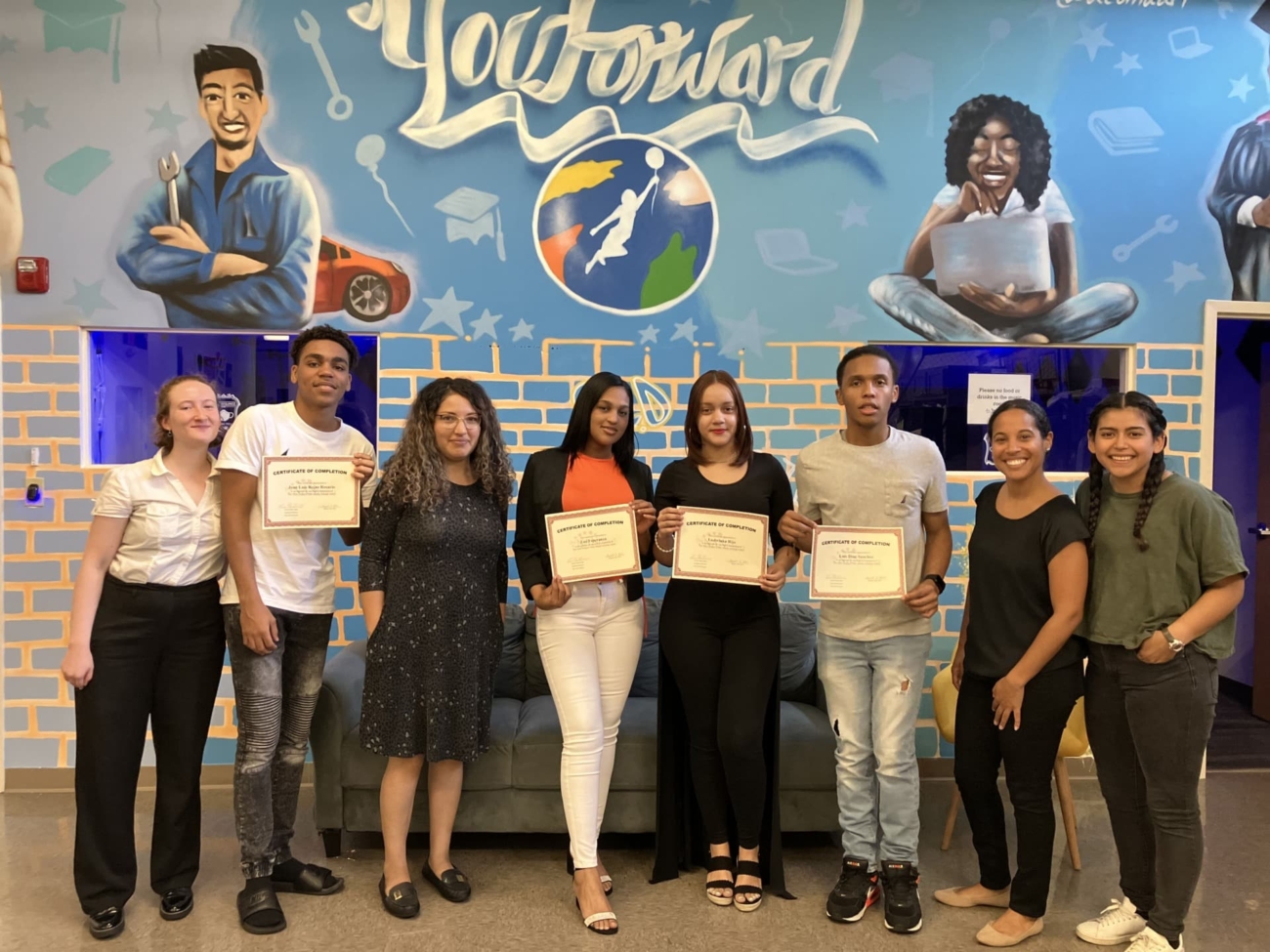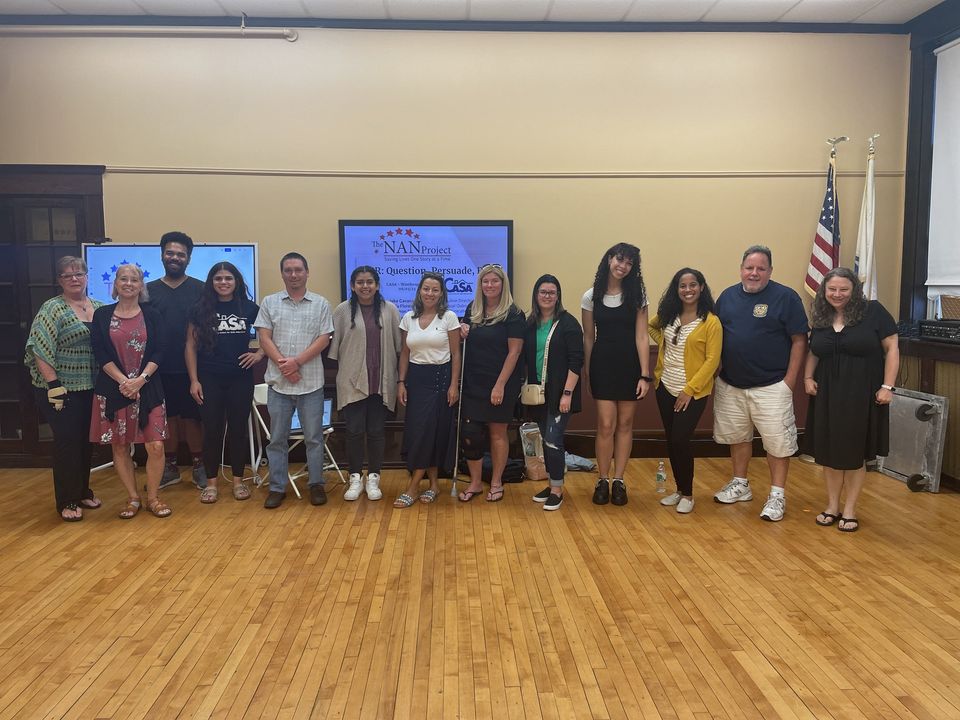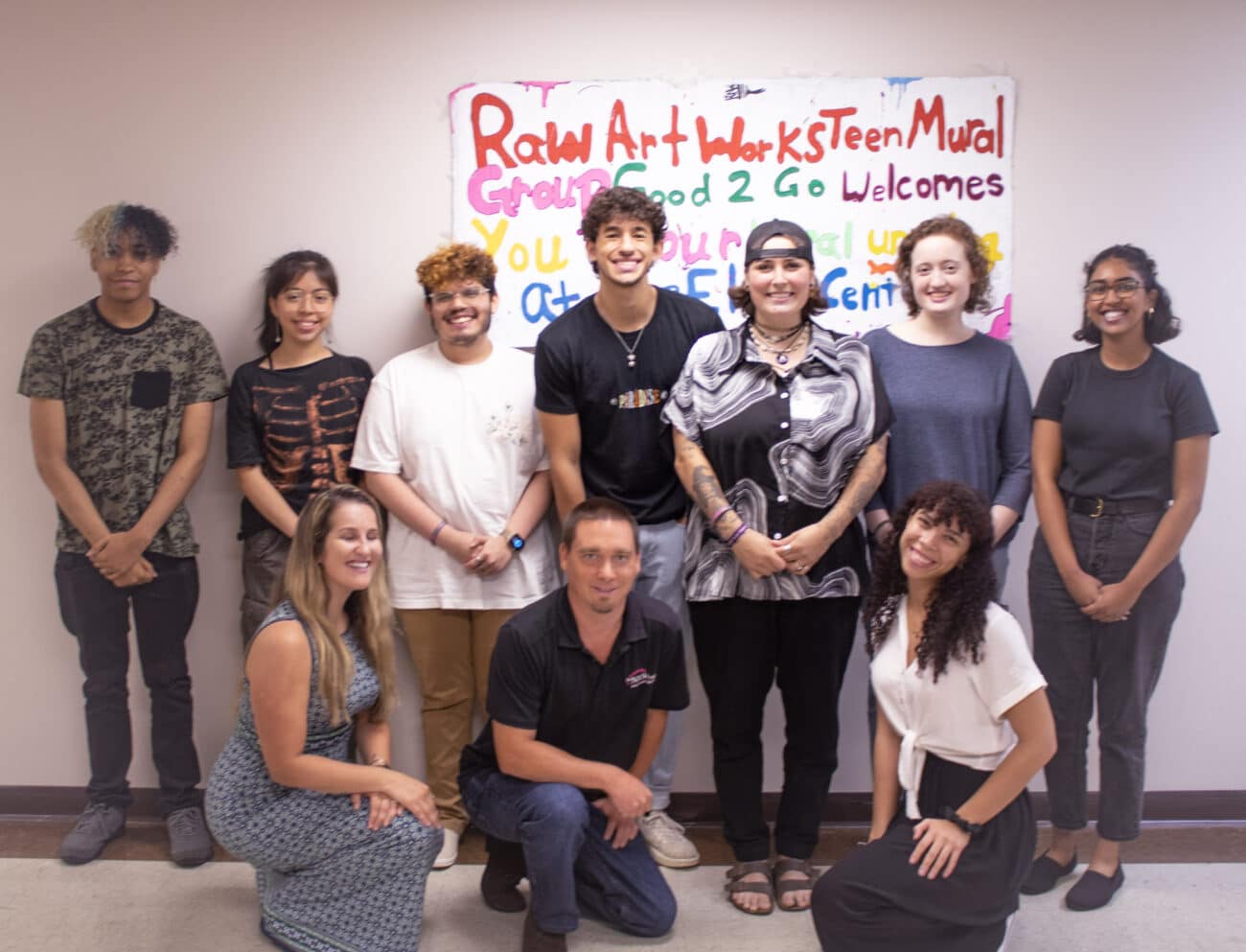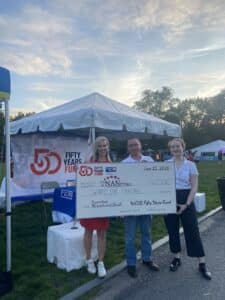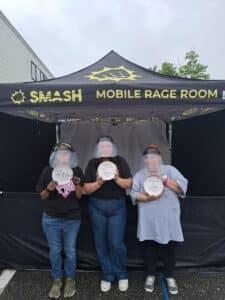SEL Circles in Everett Wrap Up
This week we wrapped up a great session of SEL circles at the Eliot Family Resource Center in Everett, MA! At these circles over the past six weeks, a group of students focused on social-emotional support in a small-group setting! Shout out to this awesome crew and their dedication to learning about the importance of mental health skills like coping strategies and mindfulness

Meditation and Mindfulness
Meditation and mindfulness are something a lot of people struggle with, they hear someone tell them to do it and it seems boring or hard or impossible. The key is finding a meditation or mindfulness practice that works for you. For some people that looks like listening to relaxing music, for others it means a bubble bath with candles, yoga, focused breathing, listening to a guided meditation, or progressive muscle relaxation. You might be wondering though, what does any of that actually do for me? With meditation you are slowing down and becoming aware of your thoughts and feelings without judgment. That is the whole point…to slow down from your daily life and take some time to just be.
Some tips on how to do that are to slow down and pay attention to your surroundings, your thoughts, feelings, all using your five senses. Accept any thought of feeling that may come up for what it is without question and focus on your breath. These steps are important in any kind of meditation you may choose to participate in.
Meditation and mindfulness can be practiced on a daily basis, or weekly, or monthly. However you can fit it into your schedule with what works in your life. Below are some tips for slipping it in when you simply do not have time. Practicing some kind of mindfulness and meditation is better than not doing it at all. If you’re having a hard time getting into it, start with once a week for 5 or 10 minutes, and build on that. There is no way to do it wrong, it is whatever and however you personally can slow down and observe.
Source: VeryWell Mind
According to the Mayo Clinic there are so many mental and physical health benefits to mindfulness and meditation including the reduction of
- Pain
- Stress
- Anxiety
- Depression
- Insomnia
- High blood pressure (hypertension)
- Asthma
- Fibromyalgia symptoms
- Improve attention
- Decrease job burnout
- Improve sleep
- Improve diabetes control
Source: The Kewl Shop
Self Care…We ALL Need it!!
Whether you struggle with mental health or not, self care is such an important part of daily living. Self care offers every single person who partakes in it the chance to reset themselves, to do something they enjoy doing, something for them in a world where we are constantly giving and giving and giving to other people or other responsibilities.
Self care is different for everyone. What I might consider self care you might not, and that is okay. Self care is whatever you deem helpful for your mental and physical health.
Here are some examples of self care:
going for a walk, reading a book, journaling, calling a friend or family member, taking a bath or a shower, spending time in nature, spending time with people you care about, playing with a pet, yoga, doing a puzzle, playing a video game, whatever you feel centers you.
Now while these are all self care aspects there’s also the aspect of just keeping up with your day to day hygiene, which can be a huge self care step for a lot of people,especially those struggling with mental health. Setting up a self-care routine can be a challenge. You have all of these ideas and it’s just figuring out how to implement them in your daily life. One thing I found works really well especially with kids, teens, and young adults is a self care bingo board.
Basically, you make a bingo board and fill it in with self care items. Then you aim to get a bingo every week. And maybe if you get a bingo, you get a bonus, self-care thing. Maybe it’s a coffee from Starbucks, maybe it’s going to a movie, going to your favorite park, or buying yourself something that you’ve really wanted, but that’s a way to help motivate you and loved ones to integrate self-care into your daily life. Some people schedule self care in their planners, some people set a certain time each day for self-care. However, you can figure out to implement self-care into at least if not a daily, a weekly routine is so important for your physical and mental well-being.
In the article How and Why to Practice Self Care put out by the Mental Health First-aid Organization they found studies showing that “Engaging in a self-care routine has been clinically proven to reduce or eliminate anxiety and depression, reduce stress, increase happiness, and more.” To me that sounds like something worth trying.
Here’s a handy checklist you can use to check in with yourself and your loved ones about mental health before the big return to school this fall:
Spanish Peer Mentor Graduation in Lawrence
Last week, we held a graduation for our new group of Spanish speaking Peer Mentors in Lawrence, Ma. We are incredibly proud of this crew and all of the hard work they put into training. We cannot wait to support the work that they accomplish in diversifying mental health advocacy!
A Re-Introduction to The NAN Project Blog
Welcome to the NAN Project
If you’re new here you might be wondering What is the NAN Project? The NAN Project came about following the tragic death of Nan, who took her own life after battling depression, anxiety, and OCD from a very young age and with very limited professional support. Nan’s family wanted to help young people feel less alone and less scared of speaking up. So they developed a peer to peer model to reach students, teachers, and emergency responders. The peer to peer model has young people with lived experience sharing their stories of mental health and shows that life can get better, with the hope to relate to young people. During presentations students are given resources and education on what to do if they or a friend is struggling.
Now that you know what the NAN project is all about we’d like to expand our messaging across social media.We have had social media accounts since the beginning, however with the onboarding of new staff we will be revamping all of our social media accounts. To do that we’ve put together a social media team, Shannon, Rachel, Kylee, and Fantasia (all pictured below!). They will be working to manage our blog, Facebook, Instagram, TikTok, and Linkedin accounts.
We have some ideas, but would love to hear from you guys and what you want to hear about. So if you have an idea please head over to our socials and send us a message or comment!

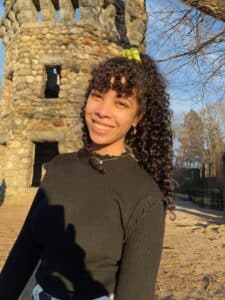
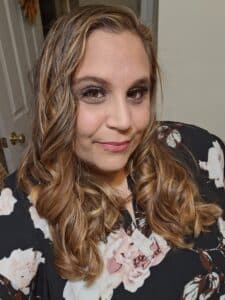
Until next week have a safe and peaceful week!
Facebook: https://www.facebook.com/thenanproject/
Instagram: https://www.instagram.com/the_nan_project/
X (formerly Twitter lol): https://twitter.com/TheNANProject?ref_src=twsrc%5Egoogle%7Ctwcamp%5Eserp%7Ctwgr%5Eauthor
Tik Tok: https://www.tiktok.com/@the_nan_project?lang=en
Blog on website: https://www.thenanproject.org/blog/
Trusted Adult Training in Winthrop
Last Thursday, we held a session of QPR training at CASA Community Action for Safe Alternatives in Winthrop, MA! We got to train suicide prevention skills to members of the Winthrop community who represented the Winthrop Firefighters 1070 , Winthrop, MA Police Department , Winthrop Public Schools, Winthrop Parents Network and other local volunteers. We are very proud of this dedicated crew of trusted adults in Winthrop!
Peer Mentor Graduation in Lynn
Recently, we had a new crew of Peer Mentors graduate after a three-day-long training in Lynn, MA with The NAN Project! They all had the opportunity to write their own inspiring comeback stories regarding their mental health journeys. They are now prepared to be mental health leaders within local communities!
Trauma-Informed Fitness Class at First Day of Peer Mentor Summer Learning Series

The NAN Project Granted $21,000 from WCVB Channel 5 Boston’s Fifty Year Fund
We were awarded a generous grant from WCVB Channel 5 Boston through their Fifty Year Fund at the J.P. Morgan Corporate Challenge! Jake, our executive director, spoke with WCVB about how this grant will make a big difference in reaching more students in MA. We are so grateful to WCVB for all the work they do to support community organizations and kudos to all who ran in the corporate challenge!
North Shore Teen Summer Send-Off in Beverly
This past weekend our Peer Mentors Ares, Emilia, and Rachel tabled at the North Shore Teen Summer Send-Off in Beverly! It was great to make new connections and send students off into the summer with this community event.




